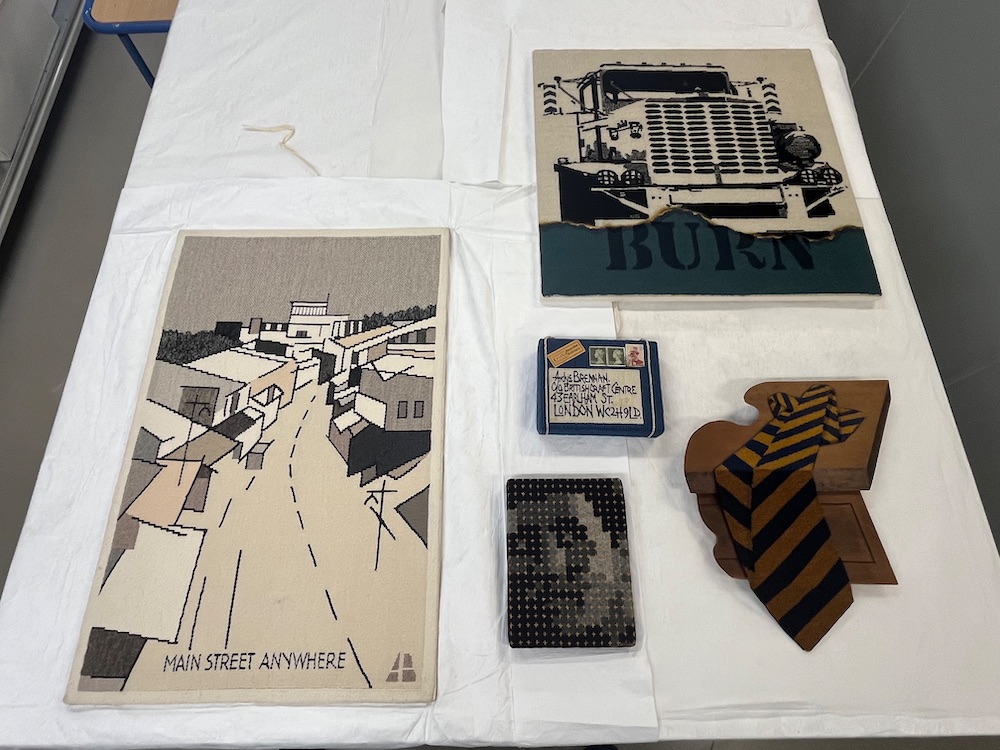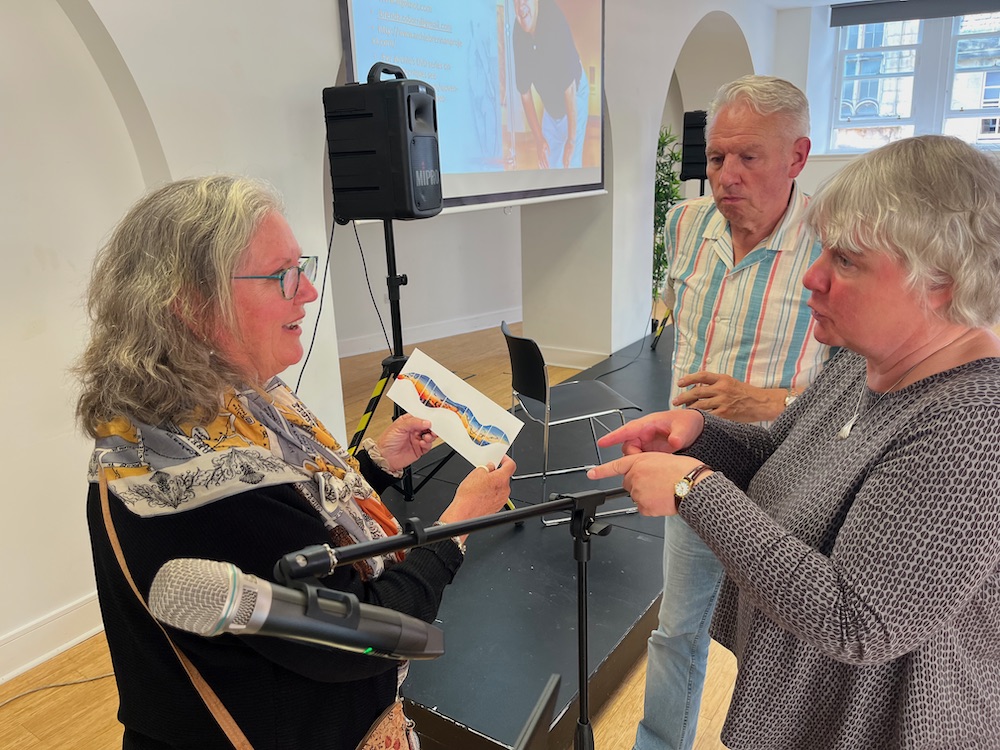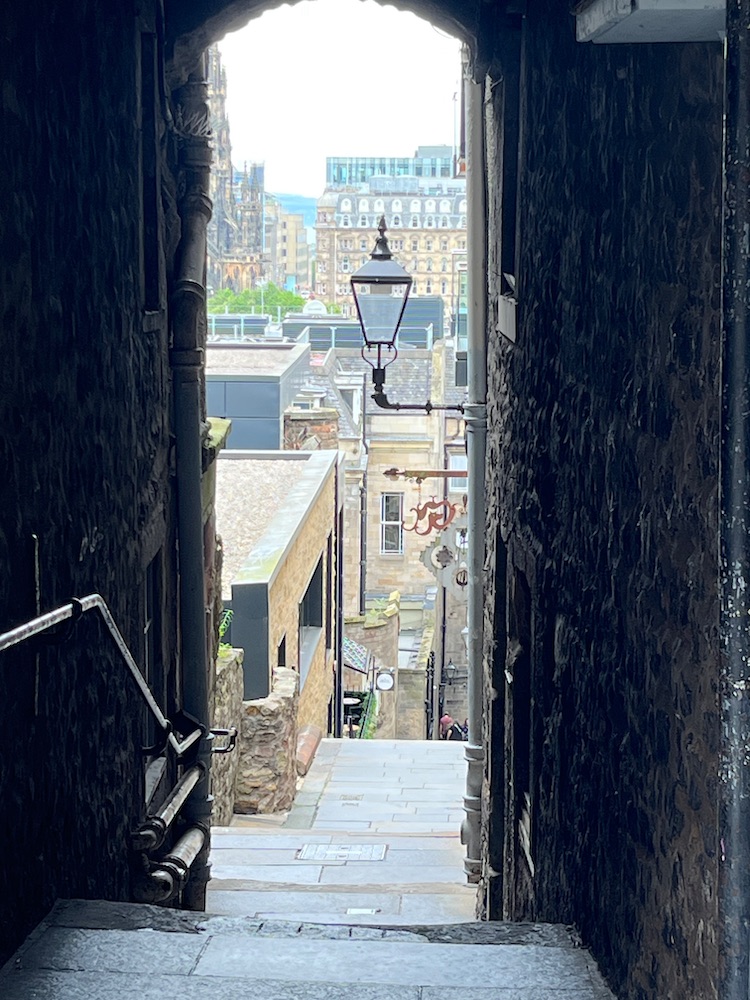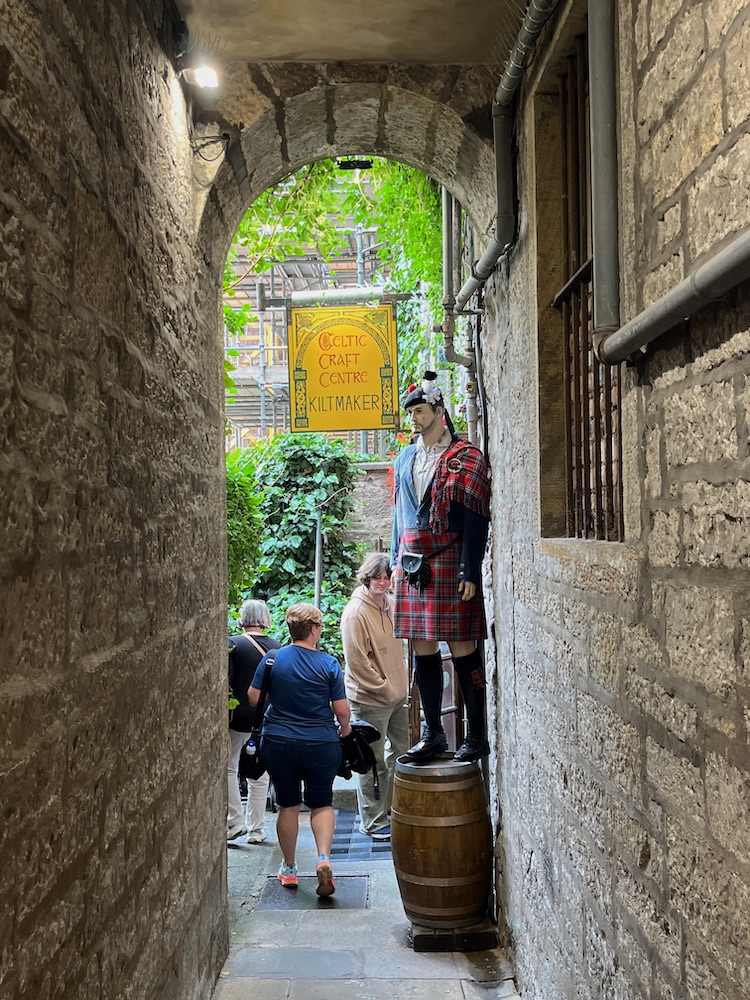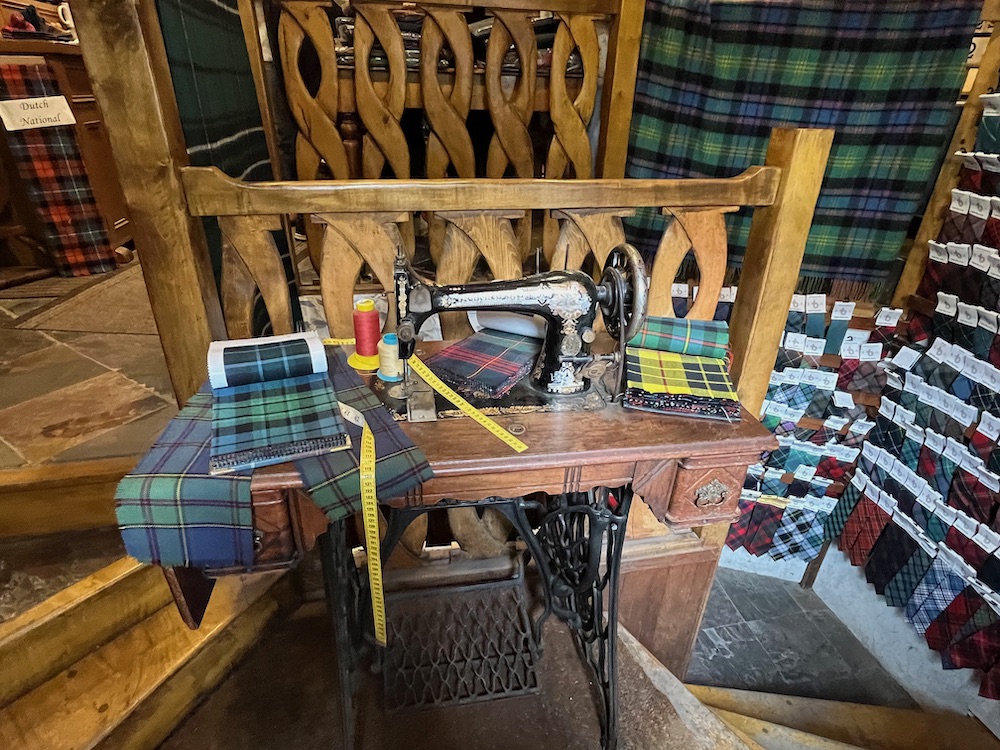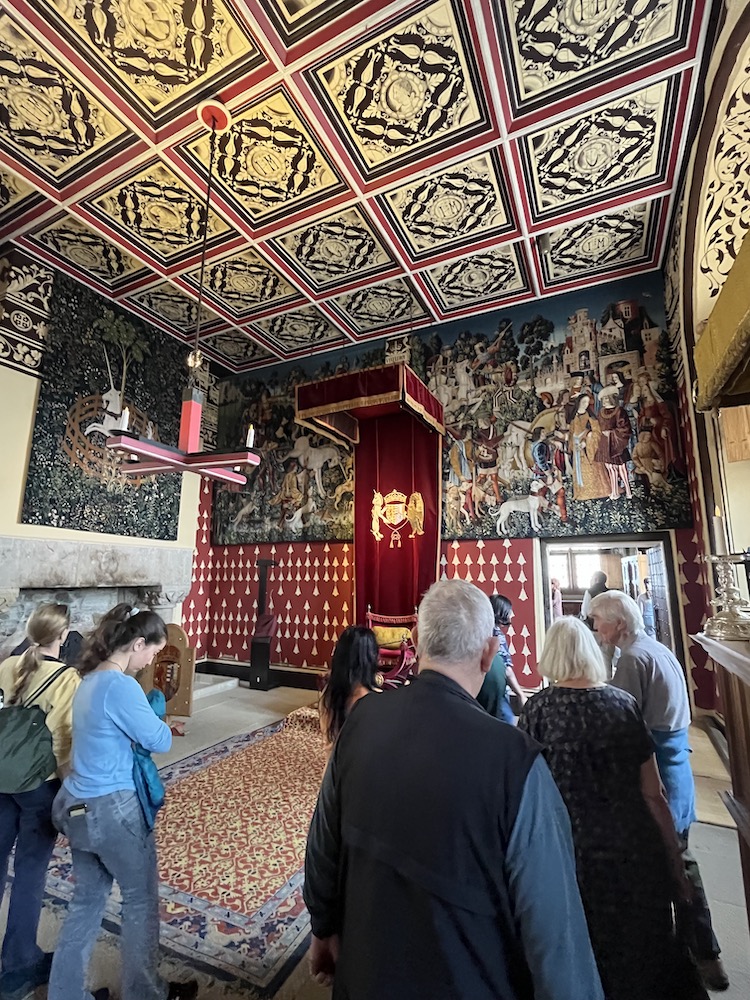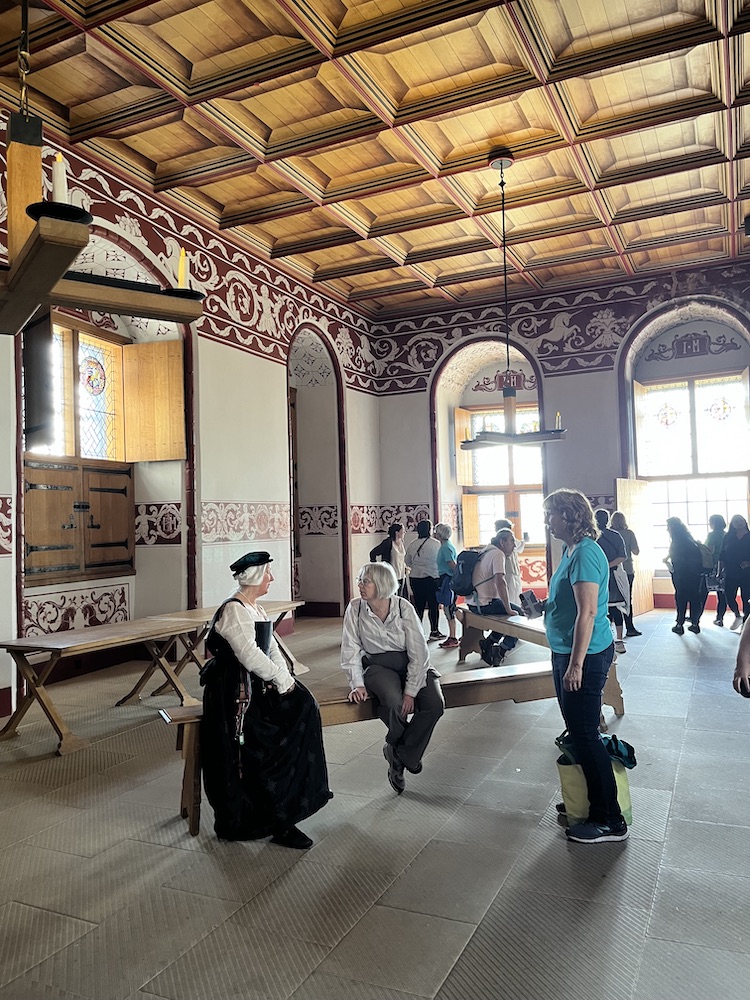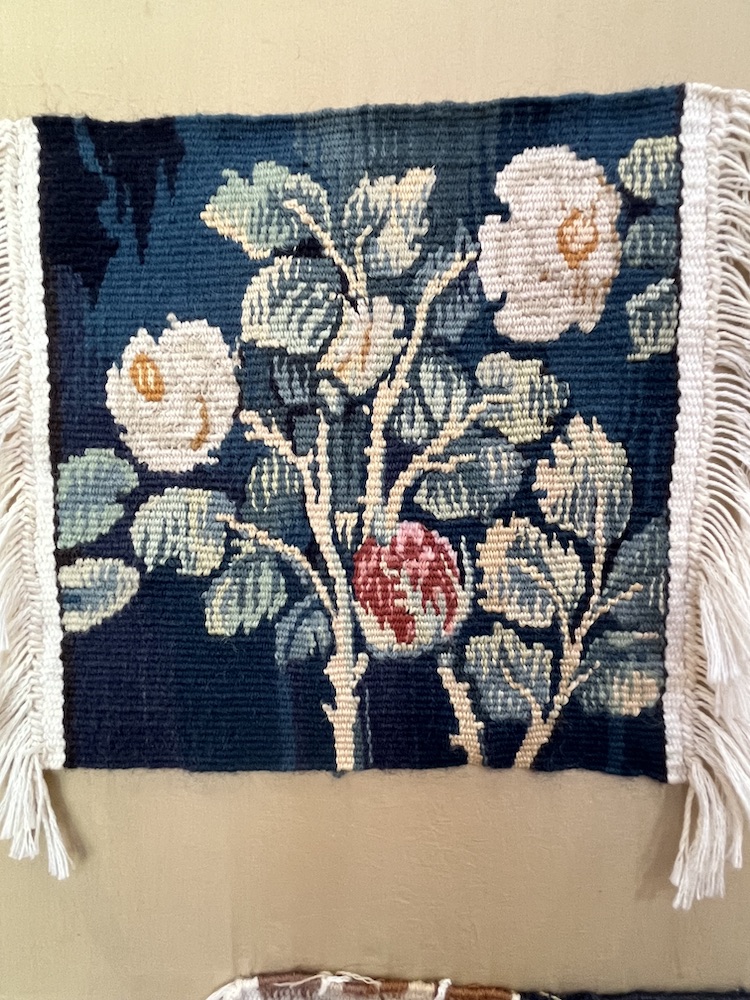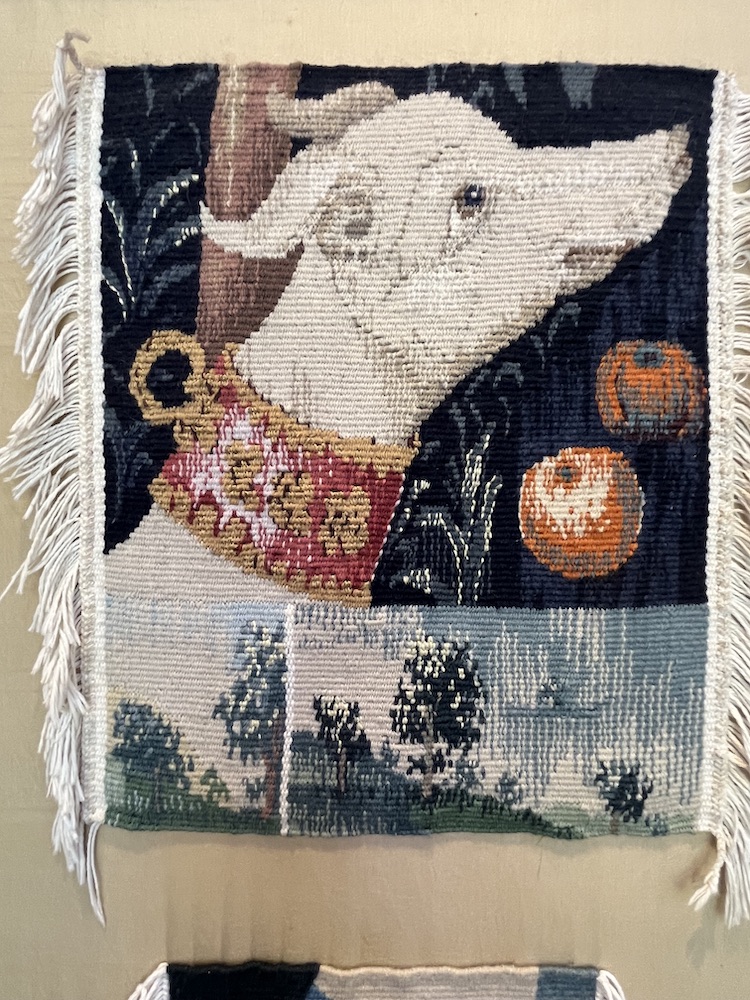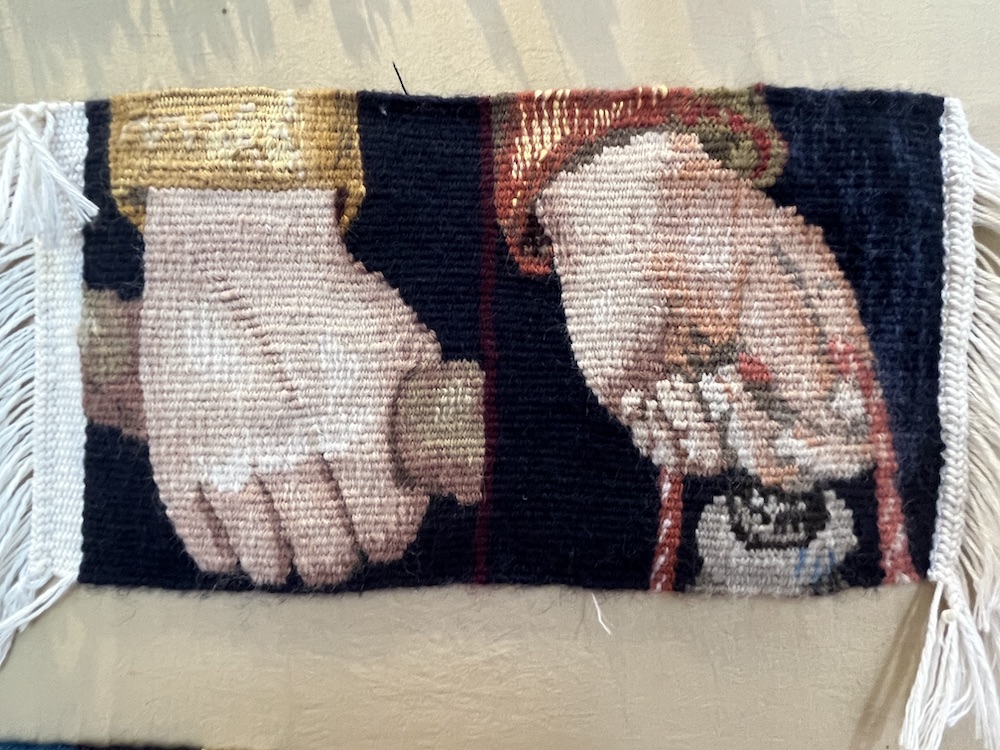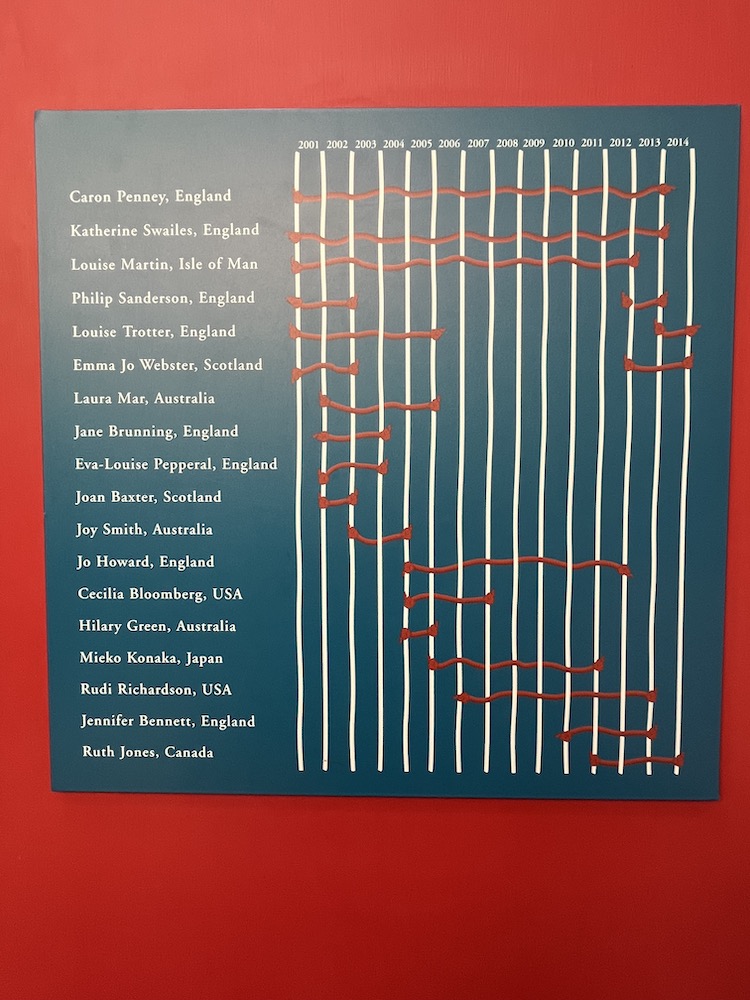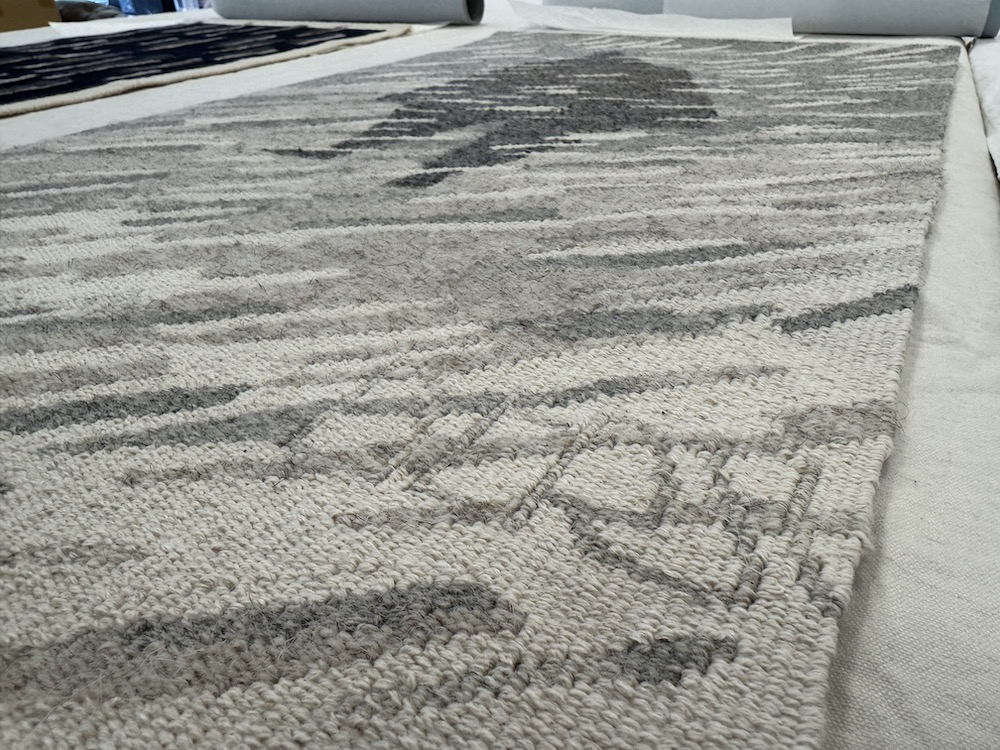Today is Hallowe’en, a far cry from July in Scotland. This morning I drove to the library to pick up a book I had reserved, and I encountered lots of preschool age children arriving for a holiday event. It was exceedingly windy due to the effects of the most recent hurricane, and leaves were whirling all around us. The children all had that exuberant bounce in their steps that is so iconic for children. They were hopping, and I couldn’t help think how many decades it’s been since my own kids walked with that joyful bounce, not to mention how long it’s been since I had that myself. When does that exuberance to get somewhere leave us? Now I feel that every joint in my body would cry out in pain. Ah well. It was wonderful to see all the children excitedly arriving at a Hallowe’en event. But I digress…
In July I visited Scotland for the 2nd time, but most of it was entirely new to me so there were a lot of ‘firsts.’ I had made an appointment with National Museum of Scotland to see the newly acquired tapestries of Archie Brennan. I had also been asked to give a talk about Archie at the Dovecot Tapestry Studio right after I arrived. These two opportunities by themselves would make the trip the highlight of my year…or decade. But Scotland has endless charms so I had two weeks of singular experiences that I won’t soon forget.
Cecilia Joicy, who is director of textiles at the National Museum, invited me into the storage headquarters of the museum, which is right on the shore of the Firth of Fourth, on the day after I arrived, along with my good friend Kari who was traveling with me.
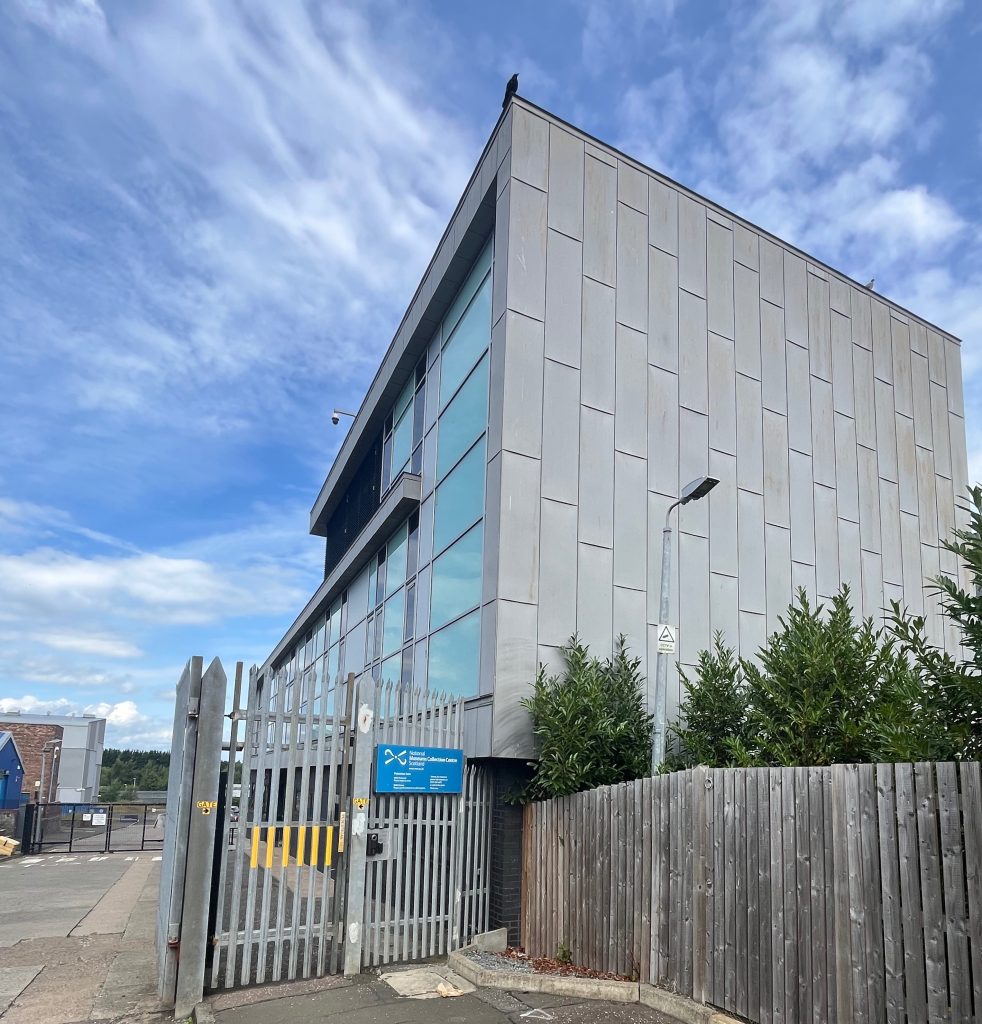
Here Cecilia is showing me how Archie wove the illusion of a tear in this piece. As you can see he actually mailed the tapestry without packaging it. It is a package itself afterall.
I thought the museum had acquired more pieces than seven, but that is all they have. They have one of my favorites, a piece Archie was weaving while the Wednesday Group was meeting with him in the 2000-teens. It’s called “Main Street Anywhere,” and it is a huge postcard. He covered the front of the piece with white paper before mailing. All his normal sized postcards were mailed without any protection, and he says none of them were ever lost or damaged, except the one he dropped somewhere on the streets of Manhattan on his way to the post office.
Two days later I gave my talk about Archie at the Dovecot Studios. As I was standing at the podium about to begin, a group of people walked in who had saved the front row for themselves. They were seven members of Archie’s family. Only one of his siblings is still living-his youngest sibling, Robert. One of Archie’s sisters in law was there, Elizabeth, and a number of his nieces who are the children of the sister in law. I even met Archie’s godson. And look at us all standing in front of one the slides from the presentation. Archie is looking down on us.
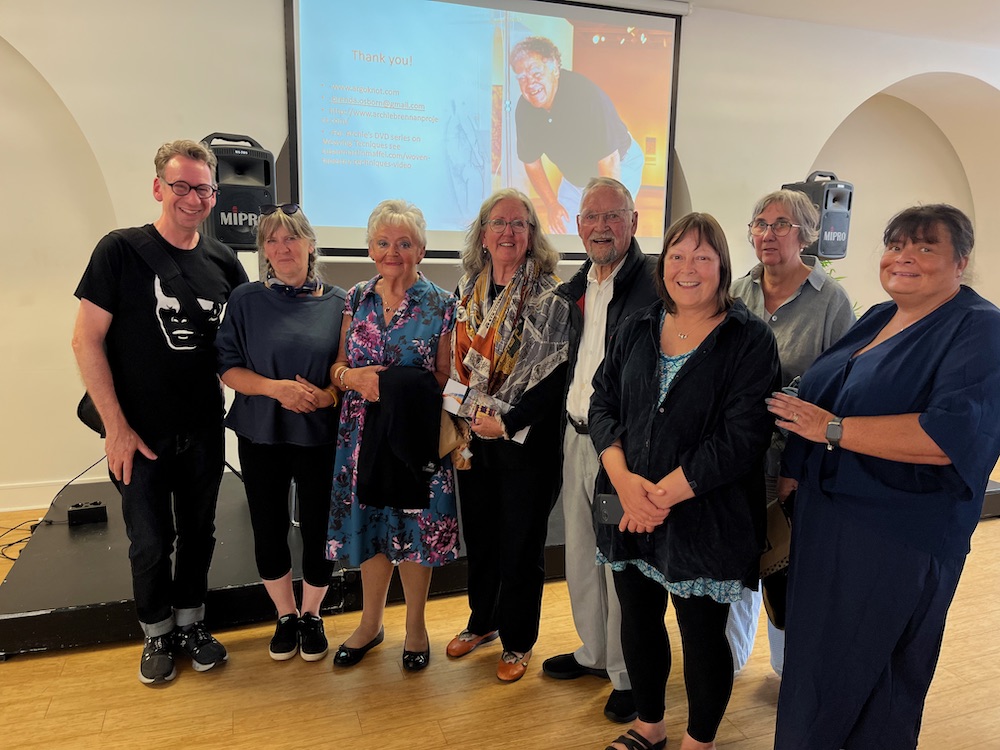
Not everyone made it into the photo. I am in the middle (with the big scarf) and Robert is on my right in the photo. To my left is Elizabeth, with her two daughters all the way to the right. On the very left is Archie’s godson. Standing somewhat behind the group (between the two nieces) is Elizabeth Radcliffe! She is one of Archie’s earliest students. I had asked her to join the group photo, but she stayed back a bit. It was such an honor to meet these wonderful relatives of Archie. I am still deeply moved when I think of it. Later, after I returned home in mid-August, I heard from one of Archie’s daughters, Sarah, saying she was on vacation out of Edinburgh when I gave this talk. I would love to have met her as well. Hopefully someday.
And another moving moment of this day was meeting John Brennan and Anna Wetherell. John was also one of Archie’s first students. I was one of his last, yet we are are rather close in age. John and Elizabeth and Anna have had a lifetime of weaving tapestry. I have had a lifetime of weaving, but I didn’t come to tapestry until just before the turn of the century–a mere 25 years ago or so. In the photo Anna is giving me a large format postcard of the Murmuration Collaboration which I have been following for some time now. I was able to buy the catalog, and the group has a substack site with detailed images and essays by the weavers who participated in this project.
So it would be impossible to surpass these two experiences, but I have to say the rest of my time in Scotland was still a terrific experience. Edinburgh is so picturesque. There is so much Gothic architecture and the city is so steep that it is a bit of challenge to see the many facets of this place. I have not been in such a steep city before.
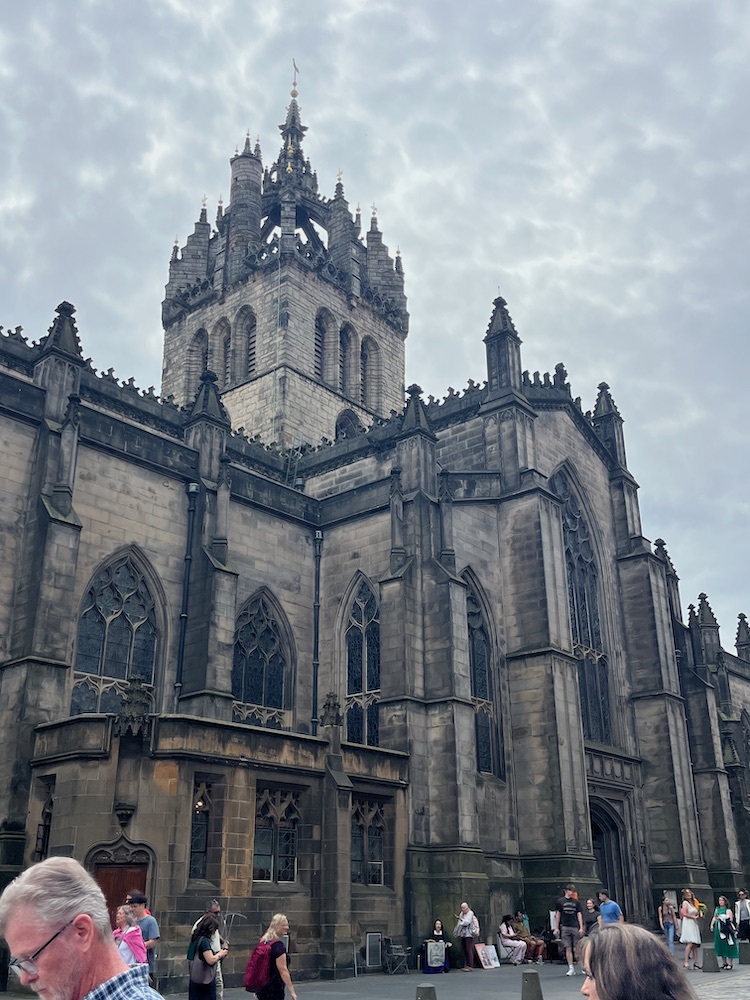
The alleyways are called closes, and there are many of them. I went down the rabbit hole of going into a shop that weaves tartans.
This shop was impossible to pass by.
They had a encyclopedic reference book of clan tartans. I looked up Brewer and Macbeth (both for a friend) as well as Bob’s Norse name Osborn that uses the Cameron tartan. I avoided committing to buying anything, but it was tempting. And speaking of tartans, two women have started a campaign for justice and a memorial for the thousands of women accused and executed for witchcraft. They now have a tartan for the Witches of Scotland. The podcast on this site is worth a listen.
Heading out of Edinburgh toward Glasgow by train we stopped in Falkirk to make our way to see the Kelpies, and even better, to meet up with my dear English friend who joined us for this part of the journey.
My goal during this short travel to Glasgow was to visit Stirling Castle for the sole purpose of seeing the reproduction tapestries of the “Hunt for the Unicorn” series based on the originals that are housed in the Met Cloisters. I had met the weavers of this daunting project in the mid-2000-teens when they visited the Cloisters to make decisions about warp sett and weft colors. For more than a decade I have hoped to see the finished tapestries. I was disappointed! The tapestries are stunning, and I actually prefer them at the coarser sett used for the reproductions. But…they have been hung so high in the Queen’s Quarters that it is hard to see them well. The walls were already decorated in the style of the period, which fights with the tapestries.
Although I took numerous close up photos of these tapestries, the perspective is odd because of the angle at which I had to take them. I enjoyed the docents who were dressed in period in the anteroom.
Most of all I enjoyed seeing the exhibit about the weaving process of recreating these tapestries, and the walk through the stone tunnel with Lesley to get to the exhibit.
The best part of this exhibit was seeing the small trial tapestries woven to practice details from the original tapestries that would be translated at a coarser warp sett. While this display shows 21 small woven samples, the weavers actually wove over a hundred small samples.
Here are some close ups of the samples
And lastly, it was touching to see this list of the weavers describing the time they each put into this massive undertaking.
It wasn’t easy to get to the castle the day we visited. The parking on the castle grounds was completely full by late morning, and finding parking in the center of Glasgow was no easy feat. But after driving around a bit (thank you, Lesley!) we parked and made the steep trek up to the castle. Lesley, Kari, and I stayed in a charming small hotel that evening, just a short drive to the Charles Rennie Mackintosh Museum in Kelvinggrove Park. Lesley has visited Glasgow a number of times and recommended that no lover of Charles Rennie Mackintosh should miss having tea at one of his original tearooms.
My favorite part of a cream tea is the sandwiches, and these did not disappoint!
It was a short visit together, but in such iconic places! Lesley headed on for her holiday on the western coast, and Kari and I began our next adventure. We took a train to Oban where we boarded a ferry to the Isle of Barra in the Outer Hebrides. It was the beginning of a week long tour of the islands through the tour firm McKinley Kidd. High summer in the Hebrides was as glorious as on the mainland. When I look through these photos I don’t know how I didn’t hop and skip my way through this dazzling time. I must practice adding an exuberant bounce to my step, for the world is so full of places that require it.


